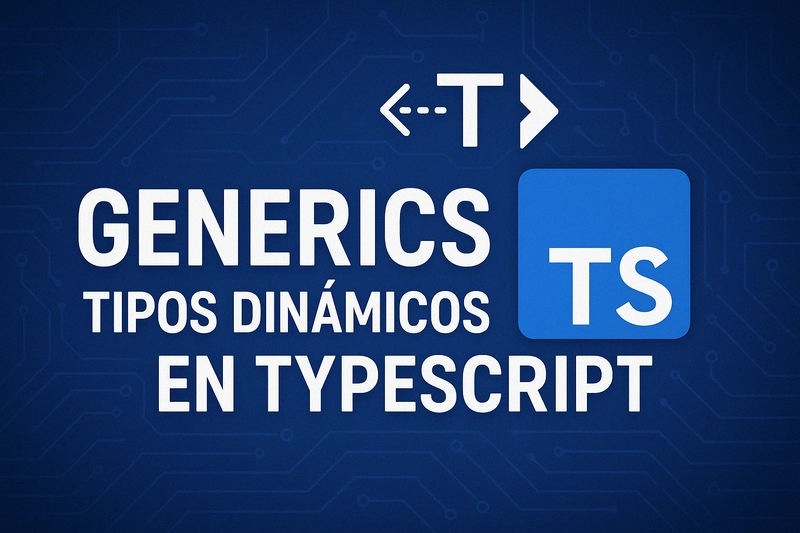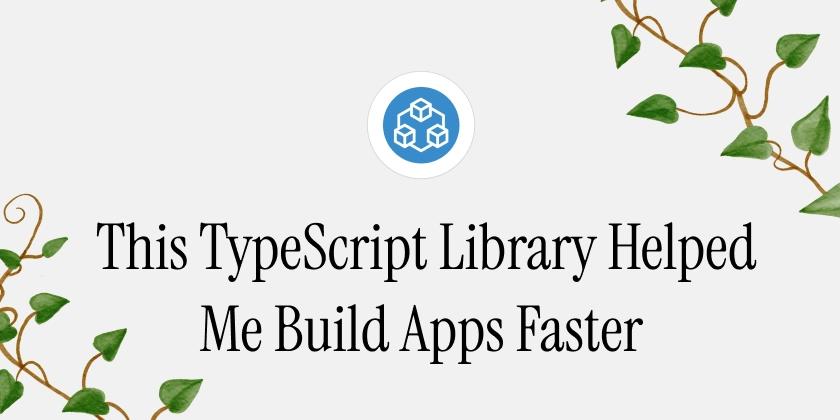Beyond Create React App: A Comprehensive Comparison of Modern Build Tools
Introduction With Create React App (CRA) now in maintenance mode, developers are being pushed towards alternative build tools for their React applications (Good!!! I dare to say, since there are better options out there!). This article compares some of the most popular alternatives, helping you make an informed decision for your next project. The Main Contenders 1. Vite Vite has emerged as one of the most popular alternatives to CRA, offering lightning-fast development experience. # Quick project setup npm create vite@latest my-react-app -- --template react # Quick project setup with TypeScript npm create vite@latest my-react-app -- --template react-ts Pros: Extremely fast development server startup Hot Module Replacement (HMR) that actually works Built-in TypeScript support Minimal configuration required Cons: Younger ecosystem compared to Webpack Some plugins might not be available for some specfic cases Production builds might require additional configuration 2. Webpack The tried-and-tested bundler that powered CRA. # Instalation npm install webpack webpack-cli --save-dev // webpack.config.js module.exports = { entry: './src/index.js', output: { path: path.resolve(__dirname, 'dist'), filename: 'bundle.js', }, module: { rules: [ { test: /\.(js|jsx)$/, use: 'babel-loader', }, ], }, } Pros: Mature ecosystem Highly configurable Extensive plugin system Battle-tested in production Cons: Slower development server startup Complex configuration Steeper learning curve 3. Next.js More than just a build tool, Next.js is a full-featured React framework. # Create a new Next.js project npx create-next-app@latest Pros: Built-in routing system Server-side rendering (SSR) Automatic code splitting Zero configuration Great developer experience Cons: Might be overkill for simple SPAs Opinionated structure Locked into Vercel ecosystem (not required, but you might have a little pain setting up to deploy in other platforms) 4. Parcel The zero-configuration bundler alternative. # Install Parcel npm install --save-dev parcel Pros: Zero configuration Fast builds Built-in support for various file types Simple to use Cons: Less flexible than Webpack Smaller ecosystem Limited advanced features Performance Comparison Development Server Startup Time: Vite: < 1 second Webpack: 5–10 seconds Next.js: 2–3 seconds Parcel: 2–4 seconds Build Time (Production): Vite: ~20 seconds Webpack: ~40 seconds Next.js: ~25 seconds Parcel: ~30 seconds Setting Up a React Project with Each Tool Vite Setup # Create project npm create vite@latest my-app -- --template react # Install dependencies cd my-app npm install # Start development server npm run dev Webpack Setup # Create project directory mkdir my-webpack-react cd my-webpack-react # Initialize package.json npm init -y # Install dependencies npm install react react-dom npm install --save-dev webpack webpack-cli babel-loader @babel/core @babel/preset-react # Create webpack.config.js # (Configuration as shown above) Next.js Setup # Create project npx create-next-app@latest # Start development server npm run dev Feature Comparison Matrix Feature Vite Webpack Next.js Parcel Fast Dev ✅ ❌ ⚠️ ⚠️ Zero Config ⚠️ ❌ ✅ ✅ SSR Support ❌ ⚠️ ✅ ❌ TypeScript ✅ ⚠️ ✅ ✅ Plugin Ecosystem ⚠️ ✅ ⚠️ ⚠️ Making the Right Choice Choose Vite if: You want fast development experience You're building a modern SPA You want minimal configuration Choose Webpack if: You need maximum flexibility You have specific build requirements You're working with legacy code Choose Next.js if: You need SSR/SSG You want a full-featured framework You want built-in routing and need API routes Choose Parcel if: You want zero configuration You're building a simple application You need quick setup Best Practices Start with the simplest tool that meets your requirements Consider your team's expertise Evaluate build performance requirements Check community support and documentation Consider long-term maintenance Conclusion While each tool has its strengths, Vite and Next.js stand out as the most compelling alternatives to CRA at the moment. Vite offers an excellent development experience for SPAs, while Next.js provides a complete framework solution. Choose based on your specific project needs and team expertise. Next Steps Try building a small project with each tool to gain deeper understanding of each Review the migration guides from CRA (click here to see the oficial page) Explore the ecosystem of your chosen tool Thoughts ?

Introduction
With Create React App (CRA) now in maintenance mode, developers are being pushed towards alternative build tools for their React applications (Good!!! I dare to say, since there are better options out there!).
This article compares some of the most popular alternatives, helping you make an informed decision for your next project.
The Main Contenders
1. Vite
Vite has emerged as one of the most popular alternatives to CRA, offering lightning-fast development experience.
# Quick project setup
npm create vite@latest my-react-app -- --template react
# Quick project setup with TypeScript
npm create vite@latest my-react-app -- --template react-ts
Pros:
- Extremely fast development server startup
- Hot Module Replacement (HMR) that actually works
- Built-in TypeScript support
- Minimal configuration required
Cons:
- Younger ecosystem compared to Webpack
- Some plugins might not be available for some specfic cases
- Production builds might require additional configuration
2. Webpack
The tried-and-tested bundler that powered CRA.
# Instalation
npm install webpack webpack-cli --save-dev
// webpack.config.js
module.exports = {
entry: './src/index.js',
output: {
path: path.resolve(__dirname, 'dist'),
filename: 'bundle.js',
},
module: {
rules: [
{
test: /\.(js|jsx)$/,
use: 'babel-loader',
},
],
},
}
Pros:
- Mature ecosystem
- Highly configurable
- Extensive plugin system
- Battle-tested in production
Cons:
- Slower development server startup
- Complex configuration
- Steeper learning curve
3. Next.js
More than just a build tool, Next.js is a full-featured React framework.
# Create a new Next.js project
npx create-next-app@latest
Pros:
- Built-in routing system
- Server-side rendering (SSR)
- Automatic code splitting
- Zero configuration
- Great developer experience
Cons:
- Might be overkill for simple SPAs
- Opinionated structure
- Locked into Vercel ecosystem (not required, but you might have a little pain setting up to deploy in other platforms)
4. Parcel
The zero-configuration bundler alternative.
# Install Parcel
npm install --save-dev parcel
Pros:
- Zero configuration
- Fast builds
- Built-in support for various file types
- Simple to use
Cons:
- Less flexible than Webpack
- Smaller ecosystem
- Limited advanced features
Performance Comparison
Development Server Startup Time:
- Vite: < 1 second
- Webpack: 5–10 seconds
- Next.js: 2–3 seconds
- Parcel: 2–4 seconds
Build Time (Production):
- Vite: ~20 seconds
- Webpack: ~40 seconds
- Next.js: ~25 seconds
- Parcel: ~30 seconds
Setting Up a React Project with Each Tool
Vite Setup
# Create project
npm create vite@latest my-app -- --template react
# Install dependencies
cd my-app
npm install
# Start development server
npm run dev
Webpack Setup
# Create project directory
mkdir my-webpack-react
cd my-webpack-react
# Initialize package.json
npm init -y
# Install dependencies
npm install react react-dom
npm install --save-dev webpack webpack-cli babel-loader @babel/core @babel/preset-react
# Create webpack.config.js
# (Configuration as shown above)
Next.js Setup
# Create project
npx create-next-app@latest
# Start development server
npm run dev
Feature Comparison Matrix
| Feature | Vite | Webpack | Next.js | Parcel |
|---|---|---|---|---|
| Fast Dev | ✅ | ❌ | ⚠️ | ⚠️ |
| Zero Config | ⚠️ | ❌ | ✅ | ✅ |
| SSR Support | ❌ | ⚠️ | ✅ | ❌ |
| TypeScript | ✅ | ⚠️ | ✅ | ✅ |
| Plugin Ecosystem | ⚠️ | ✅ | ⚠️ | ⚠️ |
Making the Right Choice
Choose Vite if:
- You want fast development experience
- You're building a modern SPA
- You want minimal configuration
Choose Webpack if:
- You need maximum flexibility
- You have specific build requirements
- You're working with legacy code
Choose Next.js if:
- You need SSR/SSG
- You want a full-featured framework
- You want built-in routing and need API routes
Choose Parcel if:
- You want zero configuration
- You're building a simple application
- You need quick setup
Best Practices
- Start with the simplest tool that meets your requirements
- Consider your team's expertise
- Evaluate build performance requirements
- Check community support and documentation
- Consider long-term maintenance
Conclusion
While each tool has its strengths, Vite and Next.js stand out as the most compelling alternatives to CRA at the moment. Vite offers an excellent development experience for SPAs, while Next.js provides a complete framework solution. Choose based on your specific project needs and team expertise.
Next Steps
- Try building a small project with each tool to gain deeper understanding of each
- Review the migration guides from CRA (click here to see the oficial page)
- Explore the ecosystem of your chosen tool
Thoughts ?




























![[Webinar] AI Is Already Inside Your SaaS Stack — Learn How to Prevent the Next Silent Breach](https://blogger.googleusercontent.com/img/b/R29vZ2xl/AVvXsEiOWn65wd33dg2uO99NrtKbpYLfcepwOLidQDMls0HXKlA91k6HURluRA4WXgJRAZldEe1VReMQZyyYt1PgnoAn5JPpILsWlXIzmrBSs_TBoyPwO7hZrWouBg2-O3mdeoeSGY-l9_bsZB7vbpKjTSvG93zNytjxgTaMPqo9iq9Z5pGa05CJOs9uXpwHFT4/s1600/ai-cyber.jpg?#)














































































































































![[The AI Show Episode 144]: ChatGPT’s New Memory, Shopify CEO’s Leaked “AI First” Memo, Google Cloud Next Releases, o3 and o4-mini Coming Soon & Llama 4’s Rocky Launch](https://www.marketingaiinstitute.com/hubfs/ep%20144%20cover.png)




































































































































































































![Rogue Company Elite tier list of best characters [April 2025]](https://media.pocketgamer.com/artwork/na-33136-1657102075/rogue-company-ios-android-tier-cover.jpg?#)







































































_Andreas_Prott_Alamy.jpg?width=1280&auto=webp&quality=80&disable=upscale#)





























































































![What’s new in Android’s April 2025 Google System Updates [U: 4/18]](https://i0.wp.com/9to5google.com/wp-content/uploads/sites/4/2025/01/google-play-services-3.jpg?resize=1200%2C628&quality=82&strip=all&ssl=1)










![Apple Watch Series 10 Back On Sale for $299! [Lowest Price Ever]](https://www.iclarified.com/images/news/96657/96657/96657-640.jpg)
![EU Postpones Apple App Store Fines Amid Tariff Negotiations [Report]](https://www.iclarified.com/images/news/97068/97068/97068-640.jpg)
![Apple Slips to Fifth in China's Smartphone Market with 9% Decline [Report]](https://www.iclarified.com/images/news/97065/97065/97065-640.jpg)

































































































































